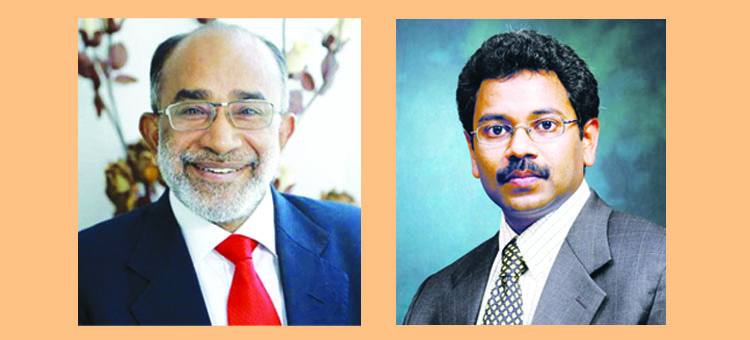Mumbai: International Buddhist Conclave 2018, scheduled from August 26 to 28, will hold the inaugural ceremony at Vigyan Bhawan in New Delhi. Post-inauguration, charter flights will take all the delegates to the Ajanta and Ellora caves. From there, they will be taken to Bodh Gaya and Sarnath.
It is estimated that there are 500 million traditional Buddhists around the world and especially in South East Asian countries. Add to that neo Buddhists in the US and Europe, another 50 million. Together they create a tourism market no less than Rs. 5000 crore. India today attracts only a meagre 0.005 per cent of the travellers.
“Even if we remove one zero from the current inflow of 0.005 per cent, that is $7 billion dollars. Imagine if we get 1 per cent of the total population to visit our Buddhist circuit?” asks Suman Billa IAS, Joint Secretary, Ministry of Tourism, Government of India.
Recently, the government decided to expand the Buddhist Tourism Circuit to 21 States. Till now, the circuit was focusing on Bihar and Uttar Pradesh – around seven major sites. A total of Rs. 362 crore has been sanctioned so far, of which, Rs. 75 crore has been cleared for Madhya Pradesh under the Ministry’s Swadesh Darshan scheme for the development of Sanchi, Satna, Rewa, Mandsaur and Dhar.
The plan is to create a Buddhist theme park, light and sound show, interpretation centre, wayside amenities and sanitation facilities. The Ministry has identified stupas and viharas across India, around which small intra-state Buddhist zones will be developed. These include Madhya Pradesh, Rajasthan, Kerala, West Bengal, Goa, Gujarat and Jammu & Kashmir.
The government’s bid to expand the Buddhist Tourism Circuit to 21 States gets a boost with the World Bank giving ‘in-principle’ nod for $1 bn towards developing Buddhist sites in India
The Buddhist Circuit is being imagined as India’s first trans-national tourist circuit, with efforts to promote tourism starting from Lumbini in Nepal, where Buddha was born, to the sites in India he traversed, including Bodh Gaya, Sarnath, Kushinagar, Rajgir, Vaishali, Sravasti and Sankasia (in Uttar Pradesh and Bihar).
“We have to brand India as the land of the Buddha. We have to gain the centre stage. Today, Chinese and other South Asian countries have taken ownership of Buddhism.” Recently, Joint Secretary Billa was in Kathmandu to sign an agreement with the Nepal Government to jointly market the circuit globally.
India has also allowed twin entry for e-visa with Nepal. This is proving very beneficial for foreign tourists travelling to India for the first time and wanting to visit Lumbini. Flying back from Kathmandu is expensive compared to taking the return flight from India. The twin entry visa is allowing them to save on travel cost.
MoT had pitched to the World Bank for building the Buddhist Circuit and has received an ‘in-principle’ approval for investment worth $1 billion, of which, $500 million will be for developing core Buddhist sites as phase 1 and $500 million for secondary sites in phase 2. MoT is set to submit a detailed plan as the next step.
Rashmi Verma, Secretary, Ministry of Tourism, Government of India, said, “Buddhist Tourism is our priority area and in line with the same, we just concluded a roadshow in four ASEAN countries – Myanmar, Vietnam, Cambodia and Thailand. We saw a lot of interest in people from these countries for travelling to India and visiting these sites.”
Most business related to Buddhist Tourism is happening around the monasteries today and so the business impact on the economy is minimal. There is hardly any spend on accommodation or food outside. The objective is to grow this activity beyond the walls of monasteries.
Buddhist tourists stay longer when compared to other religious/spiritual tourists as the faith prompts meditation and contemplation. India needs to create large meditation halls, golf courses, star hotels etc. that are needed to tap premium Buddhist travellers.
“We need huge infrastructure around Buddhist sites. The focus is on building roads, airports, hotels, ensuring cleanliness and safe drinking water. The roadmap for Sarnath is ready. Under the plan, Sarnath would be made the hub of Buddhist Tourism in India and connected to other sites through air, rail and road transport,” added K J Alphons, Union Minister of State (I/C) Tourism.
“We are hopeful that the delegates would be able to see the improved infrastructure in various stages of development at these sites,” said Billa.
For the International Buddhist Conclave, MoT is inviting Buddhist monks, who are major influencers, along with tour operators and writers who specialise in this niche segment. “Buddhism as a tourism marketing concept is not universal like Yoga or Ayurveda, so the way we promote it will be different,” Billa added.





